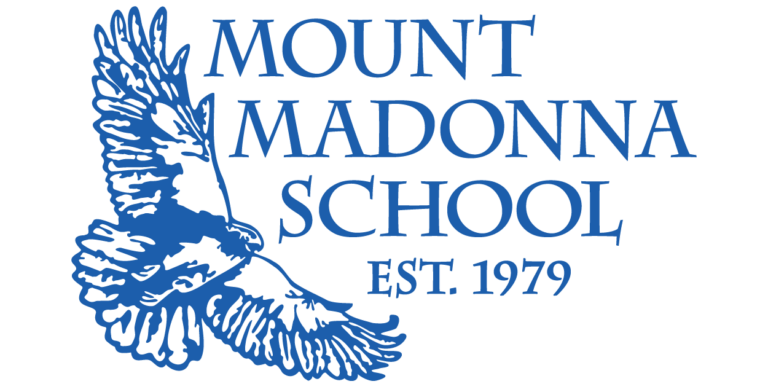 Into a tall, clear glass cylindrical container, about a third full with tap water and dishwashing detergent, Mount Madonna School (MMS) parent John Wagner using metal tongs drops a small chunk of dry ice. “We’re here to talk about things that are cold,” he tells the gathered third and fourth grade MMS students. Dry ice, Wagner says, is frozen carbon dioxide and has a temperature of 123 degrees below zero.
Into a tall, clear glass cylindrical container, about a third full with tap water and dishwashing detergent, Mount Madonna School (MMS) parent John Wagner using metal tongs drops a small chunk of dry ice. “We’re here to talk about things that are cold,” he tells the gathered third and fourth grade MMS students. Dry ice, Wagner says, is frozen carbon dioxide and has a temperature of 123 degrees below zero.
As the dry ice hits the soapy water, it immediately begins to boil, forming lots of suds that rise toward the container’s top, eventually bubbling over and sliding towards the tabletop below. Wagner is flanked by his third-grade son, Riley, who assists his dad throughout the demonstration.
“Is that what they use for special effects in the movies?” asks fourth grader Connor Murphy. “It’s such a mad-scientist special effect!”
“How come the tongs are all white?” asks a third grade boy, watching intently.
“It’s because they’re so cold,” explains Wagner. “They are freezing when they hit the air.”
 Like a magician preparing to amaze with his next trick, Wagner’s chemistry lesson includes a varied array of ordinary materials – from miniature marshmallows to a long-stemmed red rose, a latex balloon, and a bowl containing heavy cream, vanilla extract and sugar.
Like a magician preparing to amaze with his next trick, Wagner’s chemistry lesson includes a varied array of ordinary materials – from miniature marshmallows to a long-stemmed red rose, a latex balloon, and a bowl containing heavy cream, vanilla extract and sugar.
“Next I’m going to show you something that is really cold,” Wagner tells the students, many of whom are straining at the edge of their seats so as not to miss a thing. “It’s liquid nitrogen and it’s 321 degrees below zero!” Wagner lifts a large metal canister and pours a clear liquid into a stainless steel mixing bowl sitting on a table at the demonstration’s center. As the liquid touches the steel, it begins to hiss and bubble.
A chorus of “ooo’s” and “ahhh’s” echoes throughout the classroom.
 “I love the fascination and the wonder of science,” explains MMS third grade teacher Hamsa Heinrich. “And a ‘showboat’ presentation like this can really spark the kids’ curiosity and encourage them to look deeper at science.”
“I love the fascination and the wonder of science,” explains MMS third grade teacher Hamsa Heinrich. “And a ‘showboat’ presentation like this can really spark the kids’ curiosity and encourage them to look deeper at science.”
Helping his dad, Riley dumps a bag of miniature marshmallows into the bowl containing liquid nitrogen. “How many of you have ever tried “Lucky Charms” cereal?” Wagner asks the students. “The marshmallows in that cereal are freeze-dried, and that is what we’re going to do to these marshmallows.” Riley stirs the marshmallows into the mixture, and then fishes them out onto a tray. After a couple of minutes, they are passed around for the students to sample.
Swallowing a now-crunchy, dry marshmallow, fourth grader Will Pramanik says “It tastes like ice, marshmallow flavored ice!”
 Wagner, a patent attorney and co-founder of the patent law firm, Wagner Blecher LLP, says he’s presented similar demonstrations to school groups before, and he enjoys seeing kids’ enthusiasm and excitement for science. Liquid nitrogen, he explains, is available in welding supply stores and is used in some welding applications. “I really like giving the demonstration because I get to play with liquid nitrogen,” adds son Riley.
Wagner, a patent attorney and co-founder of the patent law firm, Wagner Blecher LLP, says he’s presented similar demonstrations to school groups before, and he enjoys seeing kids’ enthusiasm and excitement for science. Liquid nitrogen, he explains, is available in welding supply stores and is used in some welding applications. “I really like giving the demonstration because I get to play with liquid nitrogen,” adds son Riley.
Following a couple other demonstrations – including striking a frozen rose on the table, and watching it shatter into pieces (“that sounds like glass breaking,” remarks a girl to the boy sitting next to her), Wagner offers students a ‘sweet’ treat: ice cream made in minutes – while they watch.
 Wagner pours a container of chilled half and half, sugar and vanilla extract into a steel bowl, along with some crushed cookies. Liquid nitrogen is poured in and the whole mixture is stirred continually; thickening visibly with each rotation of the spoon. After a couple of minutes, when Wagner is satisfied with the consistency, the ice cream is scooped into cups and handed out to the eager kids.
Wagner pours a container of chilled half and half, sugar and vanilla extract into a steel bowl, along with some crushed cookies. Liquid nitrogen is poured in and the whole mixture is stirred continually; thickening visibly with each rotation of the spoon. After a couple of minutes, when Wagner is satisfied with the consistency, the ice cream is scooped into cups and handed out to the eager kids.
“Wow, this is so interesting,” remarks a third grade boy, smiling. “And super-good,” he adds, licking the spoon.
#####
Contact: Leigh Ann Clifton, Marketing & Communications
Nestled among the redwoods on 355 mountaintop acres, Mount Madonna is a safe and nurturing college-preparatory school that supports students in becoming caring, self-aware and articulate critical thinkers, who are prepared to meet challenges with perseverance, creativity and integrity. The CAIS and WASC accredited program emphasizes academic excellence, creative self-expression and positive character development. Located on Summit Road between Gilroy and Watsonville.



